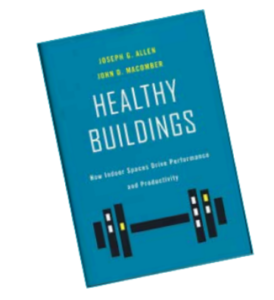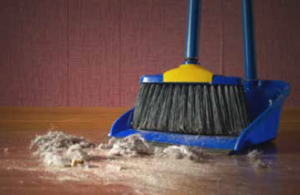Dust in Our Lives
 Our October newsletter introduced a book titled ‘Healthy Buildings: How Indoor Spaces Drive Performance and Productivity.’ The following article discusses another of the nine foundations of a healthy building discussed in that book.
Our October newsletter introduced a book titled ‘Healthy Buildings: How Indoor Spaces Drive Performance and Productivity.’ The following article discusses another of the nine foundations of a healthy building discussed in that book.
Concerns involving dust are taking the forefront of indoor air quality (IAQ) investigations. It is so important that 2 out of every 5 surveys that we have done in the last five years have somehow been related to dust in the indoor air.
But dust is a general term that covers lots of things. Particles from fibers, epithelial (skin) flakes, dirt from someone’s shoes, pet dander, and other biological contaminants can be present as dust in an indoor environment. And how do we know which one is causing the problems?
 We routinely collect counts of airborne particulate matter when we do IAQ surveys. The results of these counts show whether the smaller respirable particles are elevated, and we can also determine whether the large non-respirable particles are elevated. Usually, when it’s the large particles, that leads us to look for recent construction, cluttered workspaces, large numbers of printers or paper shredders, or even dirty air filters. Many of those sources are no-brainers. The smaller particles are often harder to pinpoint, and since those are respirable, they often affect occupants with allergies, asthma, or some other respiratory concern.
We routinely collect counts of airborne particulate matter when we do IAQ surveys. The results of these counts show whether the smaller respirable particles are elevated, and we can also determine whether the large non-respirable particles are elevated. Usually, when it’s the large particles, that leads us to look for recent construction, cluttered workspaces, large numbers of printers or paper shredders, or even dirty air filters. Many of those sources are no-brainers. The smaller particles are often harder to pinpoint, and since those are respirable, they often affect occupants with allergies, asthma, or some other respiratory concern.
Dust often acts like a chemical reservoir that carries lead, chemicals from scented items, consumer products, paints, glues, and dyes from building materials and furniture.
Dust gets into our bodies in 1 of 3 ways: through the air we breathe, through our skin, or through incidental ingestion.
Walking through a dusty area can cause the airborne dust “Pigpen- effect” named after Peanuts’ cartoon strip character. (We all remember the cloud of dust surrounding Pigpen when he walked around the neighborhood.) Working in a dusty office can encourage the absorption of chemicals through our skin when it settles on or comes in contact with a dusty surface. From there, those chemicals can permeate our bodies. Finally, eating at your desk or any dusty environment during the workday can allow particles that have settled on your food to be ingested. None of these paints a pretty picture when considering your exposure to dust.
So, what are our usual recommendations when we find elevated airborne dust levels?
Dust horizontal surfaces (desktops, shelving, moldings, personal items) regularly. This may require office occupants to clear their desktops and other work surfaces to allow custodial access.
Vacuum carpeted floors regularly using a high-efficiency particle air (HEPA) filtered vacuum. (Using any lesser quality filter may pick up larger dust particles and shred them into the much smaller respirable sizes.) Nonporous flooring (vinyl, composition, or hard tile) should also be mopped on a regular schedule to capture the dust that settles there.
Consider cleaning carpeted areas using hot water extraction methods at least semi-annually. Follow the cleaning by thoroughly drying it using active air movement (floor fans) rather than relying on the building’s HVAC (heating, ventilating, and air-conditioning) system. The HVAC is not designed to dry the wet carpet materials rapidly, and taking too long to dry could encourage mold to develop.
If you think the complaints you are hearing are due to dust, consider having us visit and sample the indoor air to confirm your suspicions. Then when your cleaning is completed, we can do post-cleaning air sampling to gauge how successful your cleaning efforts were.
